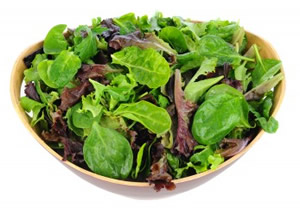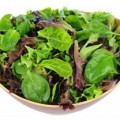On a recent trip to Portland, Oregon, I had the opportunity to stop by the original location of the infamous Voodoo Doughnut shop. Open 24 hours a days, 7 days a week (except Thanksgiving, Christmas, and New Year’s), Voodoo is acclaimed for serving up some incredibly creative renditions of that fried dough confectionary. And when I say creative, I mean bordering on the fanciful and grotesque in a quest to out-sugar even the most sugar-filled desserts. Think glazed doughnuts topped with all those sugar-laden cereals pitched to kids during Saturday morning cartoons—Fruit Loops, Captain Crunch, and Cocoa Puffs piled upon mounds of sugar-glazed fried dough.

Now this article is not about doughnuts per se, nor is it my intent to diss Voodoo Doughnut (hats off to this local business for contributing to the Portland economy). Nor is it my intent to tell you that you should never eat doughnuts—although if you must, I do hope you consider enjoying (if that’s the word) them in moderation. My point is simply to discuss some of the health effects of excessive sugar consumption and provide you with some, yes, “food for thought,” in your epicurean encounters with doughnuts and other sugary comestibles.
At the heart of this story is a hormone called insulin. Hormones are chemical messengers that are secreted from endocrine glands, travel through the body, and act upon cells and organs elsewhere to regulate their activity. In this case, insulin is secreted by the pancreas to regulate metabolism.
After you eat, the carbohydrates in your meal enter the bloodstream as glucose (a form of simple sugar). The entrance of glucose into the bloodstream results in the release of insulin from the pancreas, which signals to the liver, skeletal muscles and adipose tissue to absorb (and store) that newly arrived glucose. The liver and skeletal muscles convert the glucose into glycogen (a form of stored carbohydrate) and the adipose tissue converts the glucose into fat (another form of stored energy).
The problem with eating excessive amounts of refined sugar in a given sitting is that it triggers a hyperinsulin effect. That is, to deal with the quick influx of sugar into the bloodstream, the pancreas releases more insulin than necessary to process the arriving amount of glucose. More insulin in the bloodstream means more activity by the liver, skeletal muscles and fat cells to find storage places for glucose in the blood. (And by the way, your fat cells are capable of storing much more than your liver and skeletal muscles.)

So with all that insulin floating around to deal with the fast delivery of sugar from your meal, the storage process continues even after your blood sugar level returns to its baseline level before you ate. This means your blood sugar first spikes (as a result of the quick influx of sugar into the system) but then drops even lower than its starting point (as a result of the release of excess insulin into the system). This is why you first feel an energetic high followed by a lethargic crash after gorging yourself on those glazed doughnuts topped with Fruit Loops.
To avoid the hyperinsulin effect, you want to avoid triggering a quick elevation of your blood sugar level after eating. One way to measure how quickly foods elevate the blood sugar level is through the use of the glycemic index. Higher glycemic foods (such as pure glucose) raise the blood sugar level more quickly than lower glycemic foods (such as beans). Yet the glycemic index alone can be an inadequate indicator. This is because the amount of carbohydrate you ingest also impacts how quickly your blood sugar level rises—for example, eating a single Fruit Loop off the top of that doughnut will result in less of a glycemic response than if you eat the entire doughnut. This is where the concept of glycemic load can be useful for gaining a better understanding of the impact on your blood sugar level.

But beyond specific glycemic index and glycemic load numbers, there are some sensible guidelines that you can use to stay off the blood sugar rollercoaster without needing to worry about calculations. Namely, aim to balance your intake of high glycemic foods with low glycemic foods. At any given feeding during the day, aim for a mix of lean protein and healthy fat with your carbohydrates. Whole foods are always better than processed foods. Instead of white bread or white rice, opt for whole grain bread or long grain wild rice. Avoid foods with added sugars; nature provides plenty of simple carbs in the form of whole fruits and vegetables (fresh or frozen). Aim for a colorful plate with leafy greens and other veggies. And keep in mind that there’s nothing wrong with healthy fat. In fact, healthy sources of fat are a vital part of your nutritional needs—think avocados, olive oil, salmon, flax seeds, almonds, walnuts. Simply avoid processed foods with saturated fats (including fried foods). Good fat—along with fiber—helps to sate your hunger so you can actually stop eating sooner (and even consume fewer calories) than if you’re looking only to carbohydrates (especially simple ones) to achieve satiety.
The benefit of a diet that keeps you off the blood sugar rollercoaster includes a more stable energy level throughout the day with fewer lulls and mood swings. So when you enjoy those sugary treats, do so in moderation. And if you’re an athlete readying for a big workout or race, you especially want to avoid triggering the hyperinsulin effect in the hours or days prior to your event. Don’t handicap yourself by entering the event with a low blood sugar level. For optimal health and performance, avoid the blood sugar rollercoaster.







